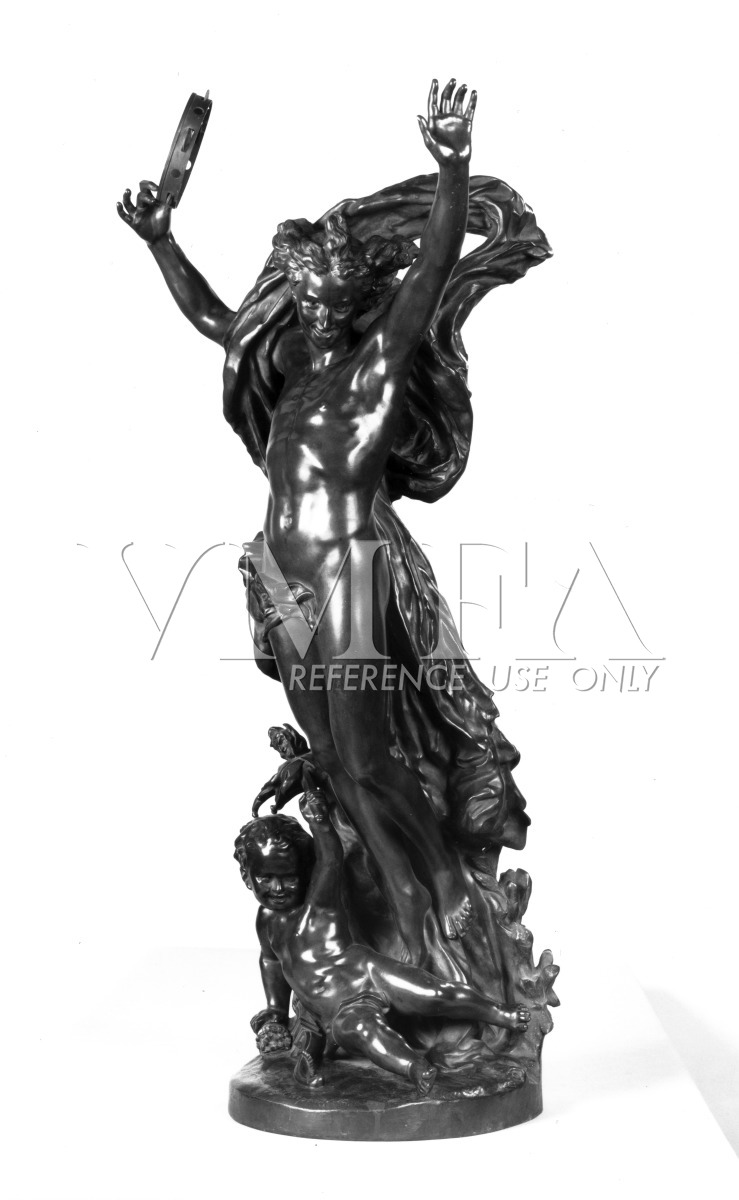
The Genius of the Dance (Translation)
Le genie de la danse (Primary Title)
Jean-Baptiste Carpeaux, French, 1827 - 1875 (Artist)
In the 1850s and ‘60s, Paris, which was in many ways still a medieval city, underwent major state-funded renovations to usher in modernization, The Paris Opera House, designed by Charles Garnier, was one such project and included sculptural decorations by Jean-Baptiste Carpeaux. VMFA’s The Genius of the Dance Is a reduced bronze casting of the central figure from The Dance, the monumental stone sculptural group that Carpeaux designed and executed for the façade of the Opera House. Although Carpeaux had trained in the rather rigid atmosphere of the École des Beaux-Arts in Paris, his style became more dynamic after he won the Prix de Rome in 1854. The prize allowed Carpeaux to live in Rome for the better part of the next decade. There he was exposed to Italian art of the late Renaissance and baroque periods.
In The Dance, an enormous multi-figure work that, because of its location, would be seen by all of Paris, a youthful male nude is surrounded by female figures. Carpeaux desired to create a convincingly dynamic and rhythmic figural group—stone turned into flesh and set into motion. In the original grouping that was installed on the façade of the Opera House in 1869, a youthful male nude holds a tambourine aloft and dances exuberantly while frolicking nude females surround him. The nudity of the figures set forth by Carpeaux shocked the public, who interpreted The Dance as obscene and indecent. The female figures in particular received the most negative attention, and there were even calls for its removal. Carpeaux’s celebration of the human figure was seen as far too sensual and naturalistic for public art, which was supposed to be serious and ideal. Carpeaux went on to case reduced versions of the group, and in The Genius of the Dance, he has eliminated the female figures. The slim male figure is draped, and he seems to embody the hedonistic and earthly spirit of the dance. At his feet, a chubby putto plays with a marotte, or jester’s scepter.
Spotlight Loan, Piedmont Fine Arts Center, Martinsville, Va., March 2, 1989 – May 2, 1989
Carpeaux, Wildenstein & Co., New York, NY, December 7, 1965 – January 15, 1966
Some object records are not complete and do not reflect VMFA's full and current knowledge. VMFA makes routine updates as records are reviewed and enhanced.

